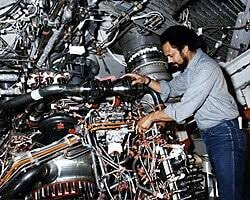How to Choose Chain Bucket Ship Unloaders?
Chain bucket ship unloaders play a critical role in the efficient handling of bulk materials at ports and terminals. These heavy-duty machines are designed to unload various types of materials from ships, such as coal, grain, ore, and cement, with high speed and accuracy. Choosing the right chain bucket ship unloader is essential to ensure smooth and reliable operations. In this guide, we will explore the key factors you need to consider when selecting chain bucket ship unloaders for your material handling needs.
1. Technical Specifications
The first step in choosing a chain bucket ship unloader is to assess the technical specifications that align with your material handling requirements. Consider factors such as the unloading capacity, speed, and the size of ships you need to handle. The unloader should be able to handle the specific types of bulk materials you deal with regularly.
2. Unloading Capacity
One of the critical factors to consider is the unloader's capacity to handle bulk materials. Determine the required unloading rate based on the ship sizes and the volume of materials you handle. Select a chain bucket ship unloader that meets or exceeds your daily unloading capacity needs to avoid operational bottlenecks.
3. Design and Efficiency
The design and efficiency of the chain bucket ship unloader can significantly impact its performance. Look for features that enhance operational efficiency, such as multiple discharge points, adjustable boom lengths, and the ability to work with various ship sizes and drafts. A well-designed unloader will optimize material flow, reducing downtime and increasing productivity.
4. Safety Features
Safety should be a top priority when selecting a chain bucket ship unloader. Look for safety features such as overload protection, emergency stop buttons, and anti-collision systems. Safety mechanisms will help prevent accidents and protect both personnel and equipment during the unloading process.
5. Maintenance and Reliability
Consider the maintenance requirements of the chain bucket ship unloader. Choose a model with easily accessible components for routine maintenance tasks. Additionally, look for unloaders that are known for their reliability and durability, as this will reduce downtime and maintenance costs in the long run.
6. Environmental Impact
Assess the environmental impact of the chain bucket ship unloader. Look for models that are designed to minimize dust emissions and spillages during the unloading process. Environmentally friendly features will help your port or terminal adhere to environmental regulations and promote sustainability.
7. Operational Flexibility
Additional resources:Unveiling the Power: Long Reach Boom vs. Traditional Excavation Methods
Choosing the Right Breather Valve for Your Tank: A Comprehensive Guide
What is waste sorting system?
What Is PET Bottle Washing Recycling Line?
How to Choose Packaging Machinery Suitable for Your Business?
What are the advantages of fully automatic packaging machines?
Things to note when using an ozone generator
Consider the operational flexibility of the chain bucket ship unloader. Look for features that allow easy adjustments for handling different types of materials. Some unloaders come with interchangeable buckets or can handle both bulk and bagged materials, providing versatility in material handling operations.
8. Installation and Space Requirements
Assess the installation requirements and space availability at your port or terminal. Choose a chain bucket ship unloader that fits within your available space and can be easily installed without major modifications to existing infrastructure.
Conclusion
Choosing the right chain bucket ship unloader is crucial for efficient and reliable bulk material handling at ports and terminals. Consider technical specifications, unloading capacity, design features, safety considerations, maintenance requirements, environmental impact, operational flexibility, and installation needs. By evaluating these factors, you can make an informed decision and select a chain bucket ship unloader that best suits your material handling operations, ensuring seamless and productive unloading processes.
Frequently Asked Questions (FAQs)
Q1. Can a chain bucket ship unloader handle different types of materials?
A: Yes, many chain bucket ship unloaders are designed to handle various bulk materials, including coal, grain, ore, and cement. Some models come with interchangeable buckets or adjustments to accommodate different material types.
Q2. How do I calculate the required unloading capacity for my port or terminal?
A: The required unloading capacity depends on the volume of materials you handle daily and the size of ships arriving at your port. Consider the average unloading rate and the number of ships you need to handle within a specific time frame to determine the required capacity.
Q3. Are chain bucket ship unloaders easy to maintain?
A: The maintenance requirements of chain bucket ship unloaders vary depending on the model and design. Look for unloaders with easily accessible components and user-friendly maintenance procedures to simplify upkeep tasks.
Q4. Can a chain bucket ship unloader handle various ship sizes?
A: Yes, many chain bucket ship unloaders are designed to accommodate various ship sizes and drafts. Look for models with adjustable boom lengths and reach capabilities to handle ships of different dimensions.
What is polymer coating?
How do you straighten rebar?
What Are the Classifications of Packaging Machines?
Do I need an inline filter for my air compressor?
Air Line Filter Buyer's Guide
Environmentally friendly solutions to plastic bottles under the microplastic crisis
What Are the Challenges Faced By China's Machinery Industry?






